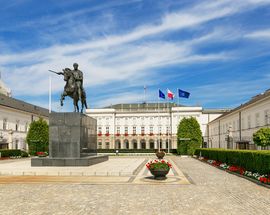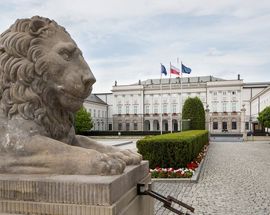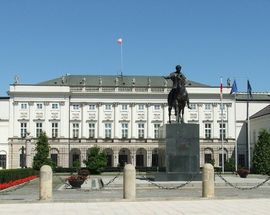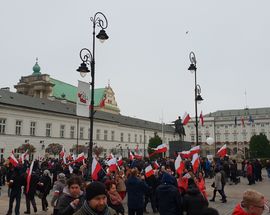If pre-war Warsaw was considered the Paris of the East, then Krakowskie Przedmieście would have been its Champs Elysees - its importance recognised by the number of palaces, institutions, monuments and churches that line it. Of those none is more important than the Presidential Palace at number 46/48, that mysterious fenced-off building guarded by stone lions and stern-looking soldiers. Construction on it started in 1643 at the behest of Stanisław Koniecpolski, though was only completed after his death. It passed into the hands of various aristocratic families and in the 18th century became famed for its banquets - the most extravagant being held to commemorate the coronation of Stanisław II August Poniatowski in 1789; over 2 million złoty was spent entertaining the 4,000 guests.
Poniatowski proved to be one of the nation’s most controversial monarchs - and also its last. He certainly had his successes, however; the Constitution of May 3, 1791, signed on these very grounds, is recognised as Europe’s first such document, and only the second in the world. Not to be confused with the king himself, the large monument in front of the Palace is of the king's nephew, Józef Poniatowski. A Polish general, he defended Warsaw during the Kościuszko Uprising and eventually died in the service of Napoleon.
After 1818 the Palace became the seat of the Viceroy of the Polish Kingdom, and its halls entertained many a visiting Tsar. It was at this time that its residence was taken up by the eccentric Józef Zajączek - a one-legged Duke who was carried around in his armchair by a team of simpering servants.
Karol Nawrocki elected in spring 2025 currently resides in the Palace with his family.







Comments